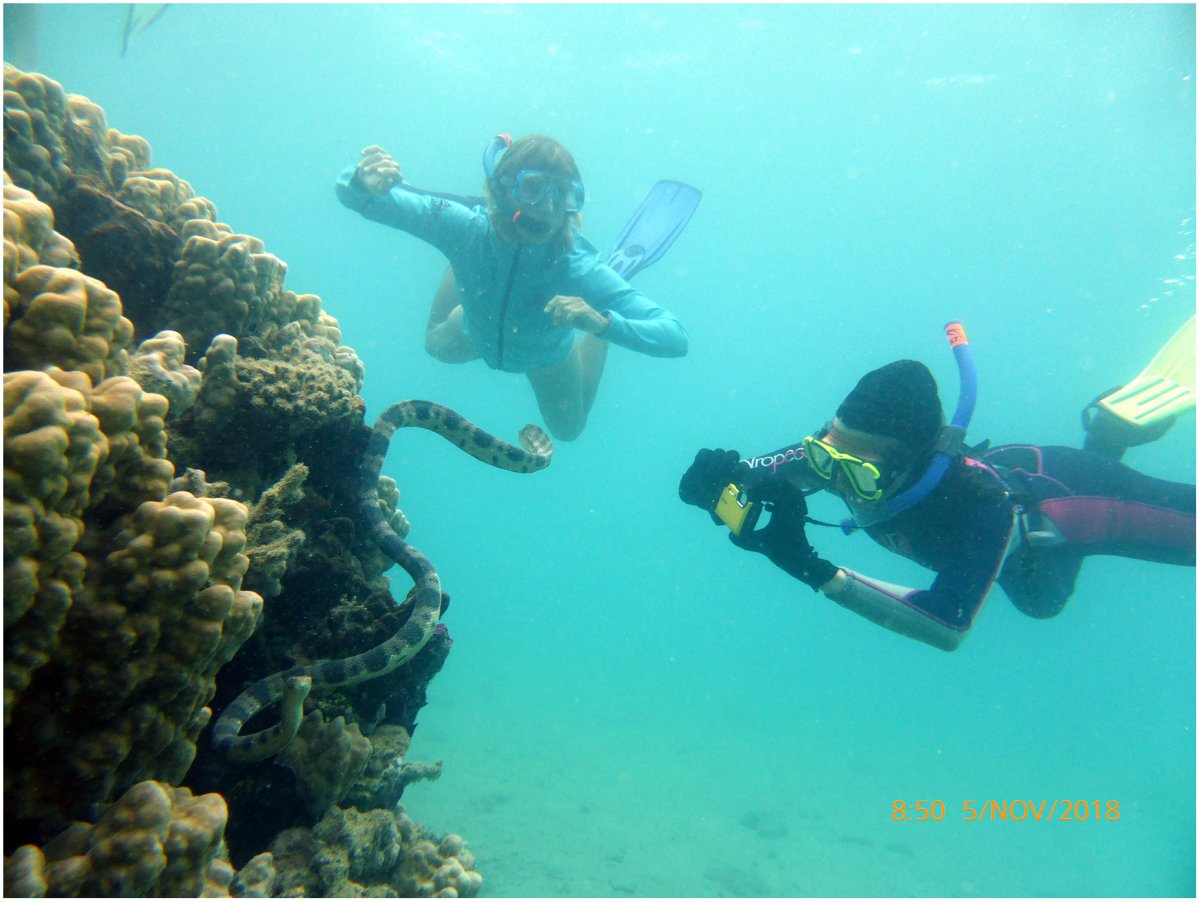A group of snorkelers in their 60s and 70s who call themselves the Fantastic Grandmothers have been instrumental in discovering a large number of venomous sea snakes and documenting various individual serpents on camera.
The group has spent the last two years involved in a citizen science project working with researchers Claire Goiran from the University of New Caledonia and Rick Shine from Australia's Macquarie University to monitor sea snake populations in the Pacific island of New Caledonia, a French overseas territory.
The species of snake they studied was the Hydrophis major—a sea-faring reptile that can reach lengths of 1.5 meters (or longer) and is venomous to humans, the researchers say. It is found in the Indian Ocean off the coasts of New Guinea and Australia as well as New Caledonia, and is one of the most commonly found sea snakes in the area.

In June 2017, the expert snorkelers who make up the Fantastic Grandmothers offered to help Goiran and Shine collect images of the snakes in their habitats in a popular tourist destination, the Baie des Citrons (or Bay of Lemons).
The fruit of their labor was published in the journal Ecosphere this week.
Goiran and Shine said they now know there are at least 249 individual snakes in the bay. More than 140 of those snakes were identified by the Fantastic Grandmothers within a 25 month period.
In contrast, the researchers had only recorded an average of 10 snakes per year over the previous three years. That is an increase of around 700 percent.
"The results have been astonishing," Goiran said in a statement. "As soon as the grandmothers set to work, we realised that we had massively underestimated the abundance of greater sea snakes in the bay."
"I have been studying sea snakes in the Baie des Citrons for 20 years, and thought I understood them very well—but the Fantastic Grandmothers have shown me just how wrong I was," she added.
The results of the project not only highlight the surprisingly large number of snakes living in the bay but reveal details about their reproduction behavior—Hydrophis major court in winter, are pregnant through to summer and give birth in the autumn, the researchers said.
The fact that there are so many snakes in the area and not one bite from the species recorded in the bay highlights their "benevolent disposition," said Shine.
"They found a large number of lethally toxic sea snakes in a small bay that is occupied every day by hordes of local residents and cruise-ship passengers," said Shine, "yet no bites by the species have ever been recorded at Baie des Citrons, testifying to their benevolent disposition."

"In summary, the voluntary participation of a specific group of community members—older women with the time and expertise to survey a local site repeatedly and in detail—is providing a unique window into the ecology of a hitherto poorly known species of large marine predator," the study authors said.
Uncommon Knowledge
Newsweek is committed to challenging conventional wisdom and finding connections in the search for common ground.
Newsweek is committed to challenging conventional wisdom and finding connections in the search for common ground.
About the writer
To read how Newsweek uses AI as a newsroom tool, Click here.








